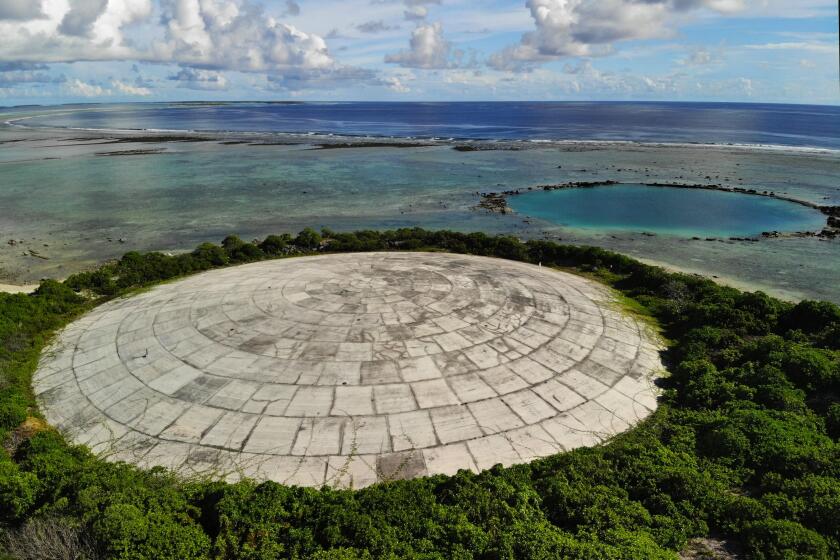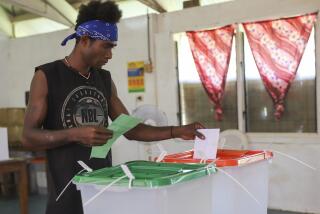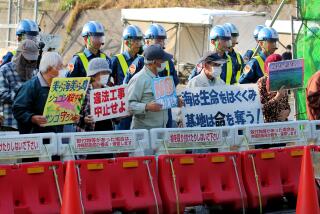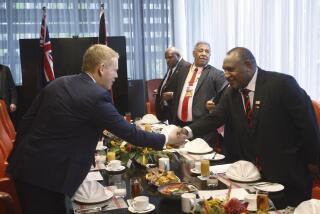Huge waves and disease turn Marshall Islands into ‘a war zone,’ health official says
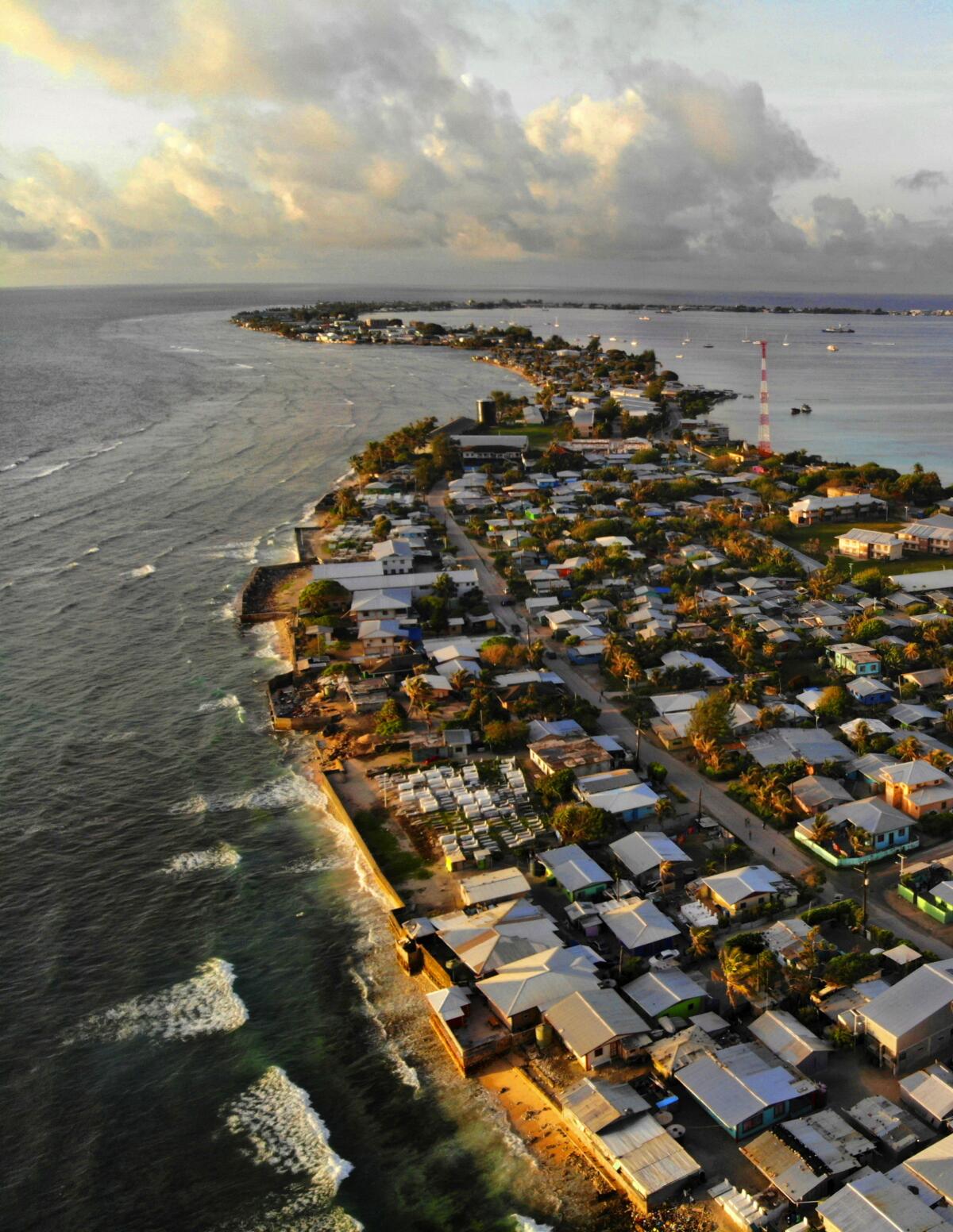
The level of alarm is already high in the Republic of the Marshall Islands, as the Pacific island nation struggles with rising sea levels and the after-effects of decades of U.S. nuclear testing on its atolls.
This week, the picture grew even bleaker as climate change, disease and political unease collided and officials put out an international plea for help.
It is too early to tell how this week will be remembered in the annals of Marshall Islands history, but it is likely not to be forgotten.
As votes were being counted in a historic election that will affect the nation’s relationships with the United States and China, its capital city was flooded, its two hospitals were packed with patients suffering from dengue fever or flu, and its president was pleading with the international community to act decisively on climate change.
Although election results are unlikely to be known until later this month — votes are hand-counted and collected from 29 atolls spaced over 750,000 square miles of ocean — the results could tilt the nation’s parliament, the Nitijela, and unseat the current president, Hilda Heine.
The Marshall Islands is “facing death row,” Heine told a meeting of international leaders at the United Nations’ Climate Conference in Madrid.
Speaking over a video feed from Majuro, the nation’s most populated atoll, she said failure to commit to drastic emissions cuts is akin to “passing sentence on our future, forcing our country to die.”
Last weekend, swells averaging more 15 feet spilled over the low-lying coral atoll, where the highest natural point is just 6 feet above sea level. Parts of the main road were flooded, while several homes and businesses were washed away.
Meanwhile, beds at the nation’s two hospitals are filled to capacity with patients suffering from the largest recorded outbreak of dengue fever — more than 1,000 diagnosed cases, most of them children — and a severely virulent form of influenza-A that is striking otherwise healthy adults, said Jack Niedenthal, the nation’s secretary of health.
A Los Angeles-based international disaster medical support team, Team Rubicon, has sent relief teams to help.
“It’s a war zone,” Niedenthal said in an email, describing long waits at the emergency room and chaos in the wards.
The Republic of the Marshall Islands is located roughly 5,000 miles southwest of Los Angeles, just north of the equator, and halfway between Hawaii and Australia.
For an island nation that’s had its share of disaster — it’s where the United States detonated 67 nuclear bombs during the Cold War, unleashed weaponized strains of lethal bacteria in the 1960s, and discarded its own irradiated soil from Nevada — this week’s events underscore the colossal challenges it faces as global temperatures and sea levels rise.
And they come at a pivotal moment: The Marshallese are waiting to hear the results of their Nov. 18 general election — a vote that could decide whether the nation maintains its decades-long alliance with the United States, or turns toward a new potential benefactor: China.
In 1986, the Marshall Islands and the United States signed an agreement cementing an alliance. In exchange for $150 million and the right for its citizens to work in the United States without visas, the U.S. secured a military base on Kwajalein Atoll and the right to refuse the military presence of any other nation.
The compact absolved the U.S. of any future responsibility related to its nuclear testing program in the Marshalls.
Today, the U.S. government is the Marshalls’ largest financial contributor, accounting for roughly 36% of the nation’s expenditures. It is also a major employer — Marshallese enlist in the American military at a higher per-capita rate than that of most states, and roughly one-third, or 22,000, of all Marshallese live and work in the U.S.
Even so, many Marshallese struggle to trust the United States. Hundreds were permanently exiled from their homeland when the U.S. began its nuclear testing program in the late 1940s, or potentially sickened by residual radiation in their food and soil.
“If the U.S. can land a man on the moon, why can’t they clean up my island?” said Nerje Joseph, who was 7 in 1954 when the U.S. detonated a bomb with 1,000 times more power than those detonated over Hiroshima or Nagasaki.
The fallout carried over Joseph’s home in Rongelap Atoll, where new research shows higher levels of radiation in the soil than was found near Chernobyl and Fukushima.
That research, along with a Times investigation that found the United States had dumped its own contaminated soil in the Marshalls and withheld critical information during the compact negotiation, has furthered that lingering distrust, many Marshallese say.
“With all due respect to the U.S. government’s experts, their attempts to reassure us leave us with more troubling questions than answers,” said Jack Ading, the minister of justice, immigration and labor.
Yet for some, the new information also provides hope for strengthening the relationship: potentially giving the Marshallese government leverage to seek full compensation from the United States as the two nations begin negotiations to renew their compact, which is set to expire in 2023.
“We did not know this information when we signed that contract,” James Matayoshi, the mayor of Rongelap Atoll, said in an interview in Majuro in September. “How could the compact be valid if we didn’t know the truth?”
Yet as the votes are counted, many wonder what will happen with those negotiations, and whether a pro-U.S. government will remain in power, or tilt toward those who sympathize with the Chinese.
Furthering tensions and concern, the Marshallese who live in the United States were excluded from the last election.
In 2017, Heine, the pro-U.S. president, barely survived a “no-confidence” vote in the Marshallese parliament that was instigated by her pro-Chinese counterparts. At issue was a proposal for a Chinese-backed special economic zone in Rongelap Atoll, which Heine opposed.
And as tensions grow between the U.S. and China, the Chinese are targeting many western allies in the Pacific as part of its Belt and Road initiative, bringing aid and infrastructure investment to struggling nations, in return for allegiance and, in many cases, debt.
In September, the Solomon Islands and Kiribati renounced ties with Taiwan, recognizing China instead.
However, a recent Chinese offer to build artificial reefs to stem sea level rise on the low-lying Pacific nation of Tuvalu was rejected.
Nevertheless, it is situation that has the U.S. government on edge. Last summer, Secretary of State Michael R. Pompeo surprised many in the Marshall Islands by announcing that the U.S. intended to renegotiate the compact between the two nations.
But as the Marshall Islands and other low-lying ocean nations struggle to survive, allies who can offer them the most financial support hold appeal.
“I’d be surprised if the Marshallese went as far as to abrogate the compact,” said Howard Hills, a Laguna Beach-based lawyer who helped draft the compact in the 1980s.
“The Marshallese are aware of the fact that a lot indigenous peoples don’t end up doing too well” when the Chinese become involved, he said. “The United States did some very wrong things in the Marshall Islands. But if you’re a small nation dealing with a superpower, there is a lot to say for the U.S.”
